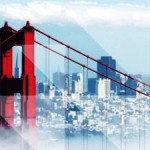- Nearly every day this summer, both particulate matter and ozone levels have exceeded standards. These pollutants can snuff life out of cities.
- On top of that, carbon dioxide emissions from cars have added to the warming in and around the city.
- By 2021, car ridership will boom by an amazing 106 per cent. Bus ridership will be slowest to increase at 28 per cent. If people carrying capacity of roads drop, how will Delhi move more than 25 million person trips a day sustainably by 2021?
 New Delhi – On this World Environment Day, Centre for Science and Environment (CSE) sounds a warning – newer air pollution and mobility challenges are threatening Delhi. An ominous slide has already begun. While the air remains extremely dirty, severe energy impacts of growing motorization are being felt as well. This summer, both particulate matter and ozone levels have exceeded standards almost on a daily basis. At the same time, the share of carbon dioxide emissions from personal vehicles (which warms up the air) is increasing rapidly.
New Delhi – On this World Environment Day, Centre for Science and Environment (CSE) sounds a warning – newer air pollution and mobility challenges are threatening Delhi. An ominous slide has already begun. While the air remains extremely dirty, severe energy impacts of growing motorization are being felt as well. This summer, both particulate matter and ozone levels have exceeded standards almost on a daily basis. At the same time, the share of carbon dioxide emissions from personal vehicles (which warms up the air) is increasing rapidly.
Says Anumita Roychowdhury, CSE’s Executive Director-Research and Head of its Air Pollution Team, “This is worrying, when the daily travel trips are expected to explode from 15 million today to 25.3 million in 2020. The travel practices of the teeming millions in 2021 will determine livability of Delhi.”
She adds, “If no further action is taken to radically improve public transport, walking and cycling, then Delhi by 2021 will gasp for breath, pay unacceptable fuel costs and spew warming gases like never before.”
Is the city prepared to deal with that?
Here is a report card from CSE.
- The summer of 2012 is a grim reminder of severe and worsening multi-pollutant crisis: CSE analysis of the official air quality data shows that ozone, the new predator in town, has exceeded standards on all days in May and most days in April this year in areas like Civil Lines and Airport and on 80 per cent days in residential colonies like R K Puram. Ozone is a serious problem during summer when nitrogen oxides and hydrocarbons react under the influence of sunlight and high temperature to form ozone. This can have immediate health impact even at short duration exposures. The levels of tiny particles are also unacceptably high across the city.
- Cars threaten to upset the carbon budget of Delhi: With Delhi hard-selling the lifestyle of cars, carbon dioxide (CO2) emissions from vehicles have exploded. It is shocking that cars and SUVs together contribute 45 per cent – close to half of the total – CO2 load from all vehicles. This will be a stunning 52 per cent by 2021. Can Delhi or any city afford CO2 emissions from luxury uses? More than 90 per cent of the 1,200 vehicles sold every day in Delhi are personal vehicles. Cars with bigger engines that guzzle more fuel are increasing. The Government of India has failed to notify the fuel economy standards for cars even after four years of protracted negotiations with the auto industry.
- Bus ridership – transport of the majority – sliding deplorably: Bus transport ridership has already dropped from 60 per cent in 2000 to 40 per cent now. With each bus trip lost to cars and two-wheelers, pollution and health costs will worsen. RITES forecasts that even after the full completion of the Metro rail project, the Metro ridership will still be at 20 per cent of the vehicular trips including non-motorized transport in 2021. The bulk of the public transport services will have to be bus-based. But bus ridership is expected to slide further to 36 per cent. How will Delhi meet the Delhi Master Plan target of 80 per cent public transport ridership by 2020?
- Car trips will increase the maximum by 2020: If there is no improvement in public transport ridership, the number of personal vehicle trips will peak. By 2021, car ridership will increase the maximum – by 106 per cent. Bus ridership will be slowest to increase at 28 per cent. With loss of bus ridership, per capita emissions and fuel guzzling will increase and the city will suffer huge pollution, health and fuel costs. On a per person basis, CO2 emission from a car is six times higher than a bus.
- More cars will reduce people-carrying capacity of Delhi roads: Even during peak hours, a car carries only 1.5 persons as opposed to a bus carrying 60-70 people. Two cars occupy same space as one bus, but carry 20 times less people. If this trend continues, the capacity of roads to carry more people will reduce drastically. This is extremely worrying when Delhi will have to move more than 25 million trips a day by 2020.
- People-carrying capacity of major arterial roads is already severely impaired: Delhi might have the most extensive road network at 21 per cent of its geographical area, but it is saturated and severely choked with vehicles. In some of the prominent arteries, cars are more than half to close to 70 per cent of the total traffic – but they carry only 17-20 per cent of the travel trips. In Swarn Jayanti Marg in Dhaula Kuan, the share of cars is as much 68 per cent. On a city-wide basis, even after occupying the maximum road space, cars carry only 14 per cent of all trips, says the RITES survey of 2008.
- Motorization is happening amidst enormous inequity and poverty: Delhi needs affordable modes of transport. It is unacceptable that bus, walk and cycle are threatened in a city where 63 per cent of the urban population can spend less than Rs. 2,654 per month or Rs. 88 per day (as per NSSO data). Expensive transport system is unaffordable and harsh for many.
- Will cars make Delhi run to a standstill by 2020? The ongoing urban emissions info study on car running speed breaks the myth that driving a car is the best way to travel in Delhi and NCR. The pilot study in South Delhi, Noida, Greater Noida, Gurgaon and Dwarka has found that cars crawl at 4 kmph for almost 24 minutes in two hours of driving and waste 200,000 litre of fuel for one million cars plying daily. The study cautions against building new roads and flyovers. Delhi is so gridlocked and polluted when 48 per cent of Delhi households do not own any vehicle.













